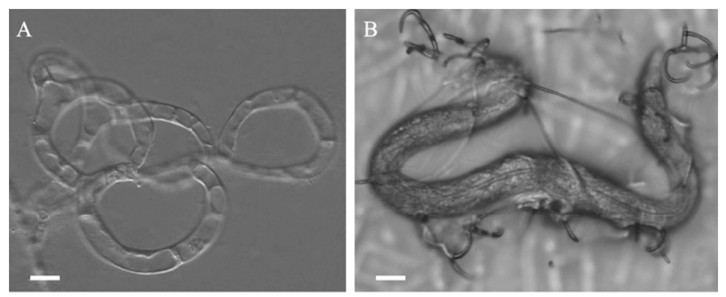Predatory fungi are a group of fungi that produce a variety of traps, including sticky nets, sticky balls, sticky branches, constriction rings, and three-dimensional fungal nets, to catch nematodes. To date, more than 380 species of predatory fungi have been reported from around the world, including members of the phyla Splanchomycetes, Ascomycetes, Stromatophora, and Hemiptera. They are widely distributed worldwide and exist in various ecological environments, including agricultural soils, garden soils, forest soils, etc.
Lifeasible is a credible provider of high-quality functional analysis services for predation plant nematodes by fungi. Our platform has state-of-the-art facilities and highly experienced staff to support projects in all areas. We guarantee to deliver results on time to our customers.
 Fig.1 Morphology of the predatory organ.
Fig.1 Morphology of the predatory organ.
In addition to the inducing substances, the sticky substances produced by the predatory organs are also important for efficient nematode predation. There are few reports on the specific composition of the sticky substances. We help our clients analyze the sticky material produced by predatory organs to provide easy access for their research.
Lifeasible provides fast turnaround, high-quality services at competitive prices for customers worldwide. Our advanced technical platforms can help our clients complete the research process with quality and quantity. If you are interested in our services or have any questions, please feel free to contact us or make an online inquiry.
Lifeasible has established a one-stop service platform for plants. In addition to obtaining customized solutions for plant genetic engineering, customers can also conduct follow-up analysis and research on plants through our analysis platform. The analytical services we provide include but are not limited to the following:
July 13, 2024